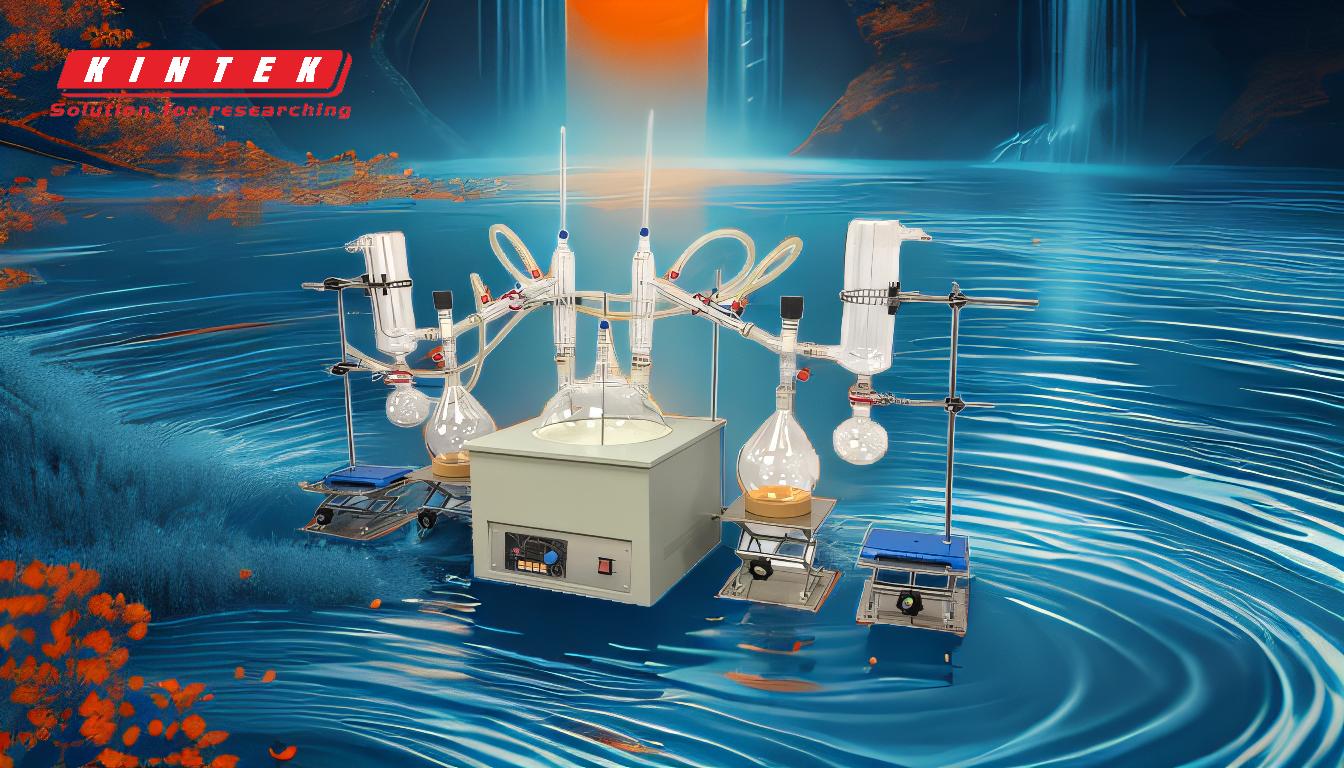Molecular distillation is a specialized separation process conducted under high vacuum conditions, designed to handle thermally sensitive and high-boiling-point compounds. It operates by creating a short path for vapor to travel before condensing, minimizing surface hold-up and ensuring efficient separation. The process involves heating a liquid mixture to form a thin film, which evaporates under low pressure. The vapors then condense on a nearby cooled surface, separating the components based on their boiling points. This method is particularly effective for purifying and concentrating valuable compounds, such as vitamins and polyunsaturated fatty acids, while minimizing thermal degradation.
Key Points Explained:

-
High Vacuum Conditions:
- Molecular distillation operates under extremely low vacuum pressures, typically around 0.01 torr or below. This reduces the boiling points of substances, allowing separation at lower temperatures and minimizing thermal damage to sensitive compounds.
-
Short Path Distillation:
- The process is classified as short path distillation because the vapor travels a very short distance (about 2 cm) before condensing. This minimizes losses due to surface hold-up and ensures rapid condensation, enhancing efficiency.
-
Thin Film Evaporation:
- The liquid mixture is spread into a thin film on the heated vessel walls using PTFE wipers moving at high speeds. This increases the surface area for evaporation and ensures uniform heating, which is critical for effective separation.
-
Thermal Sensitivity Handling:
- Molecular distillation is ideal for thermally sensitive compounds, such as vitamins, polyunsaturated fatty acids, and other natural products. The low-temperature operation prevents degradation and preserves the integrity of these compounds.
-
Separation Based on Mean Free Path:
- The process separates molecules based on their mean free path, which is the average distance a molecule travels before colliding with another. Under high vacuum, the mean free path is extended, allowing molecules to be separated without collisions.
-
Applications:
- Molecular distillation is widely used in industries such as pharmaceuticals, food, and cosmetics for purifying and concentrating valuable compounds. It is particularly effective for separating complex mixtures with similar boiling points or high molecular weights.
-
Equipment Design:
- The distillation vessel typically includes a heating jacket, PTFE wipers, and a condenser. The feed flows down the heated walls, forming a thin film that evaporates, and the vapors condense on the nearby cooled surface. The condensate is collected as the product, while the residue is recirculated for further distillation.
-
Energy Efficiency:
- The reduced boiling points under vacuum conditions lower the energy required for heating, making molecular distillation an energy-efficient separation method compared to traditional distillation techniques.
-
Advantages:
- High purity of separated compounds.
- Minimal thermal degradation of sensitive materials.
- Efficient separation of complex mixtures with similar boiling points.
- Energy savings due to lower operating temperatures.
-
Limitations:
- High initial equipment cost.
- Requires precise control of vacuum and temperature conditions.
- Limited to small-scale or batch processing for certain applications.
By understanding these key points, equipment and consumable purchasers can better evaluate the suitability of molecular distillation for their specific needs, ensuring optimal separation and purification of thermally sensitive and high-value compounds.
Summary Table:
| Key Aspect | Details |
|---|---|
| High Vacuum Conditions | Operates under 0.01 torr, reducing boiling points and minimizing thermal damage. |
| Short Path Distillation | Vapor travels ~2 cm, ensuring rapid condensation and minimal surface hold-up. |
| Thin Film Evaporation | Liquid spread into a thin film for uniform heating and efficient evaporation. |
| Thermal Sensitivity | Ideal for vitamins, fatty acids, and other heat-sensitive compounds. |
| Applications | Pharmaceuticals, food, cosmetics for purifying and concentrating compounds. |
| Advantages | High purity, minimal degradation, energy efficiency, and precise separation. |
| Limitations | High equipment cost, requires precise control, limited to small-scale use. |
Ready to optimize your separation process? Contact our experts today to learn more about molecular distillation!












